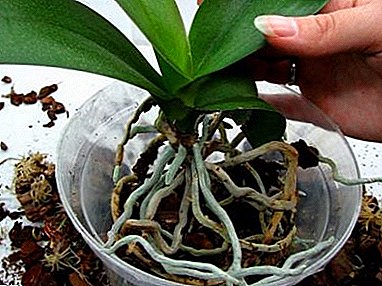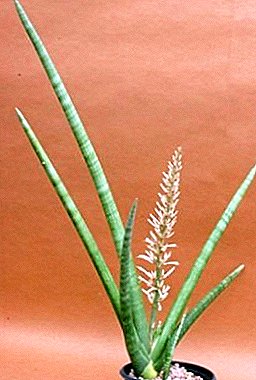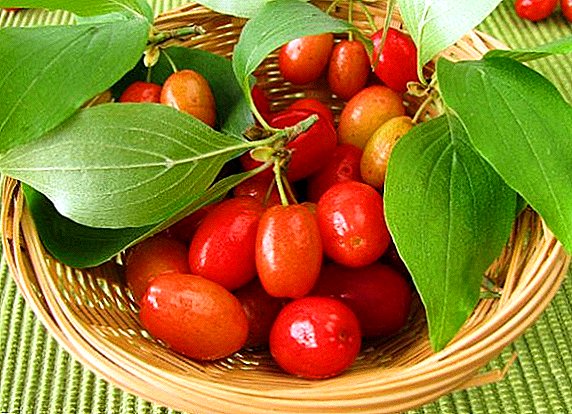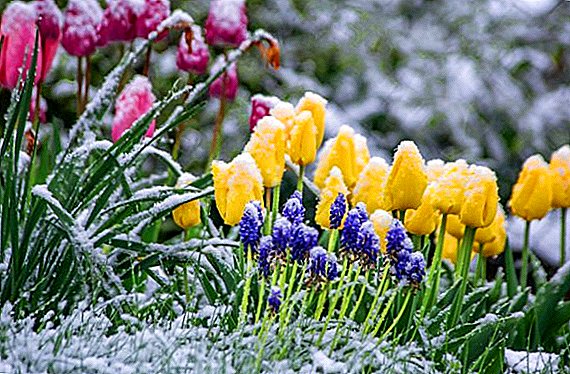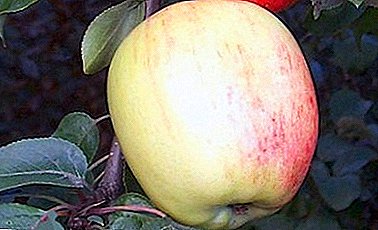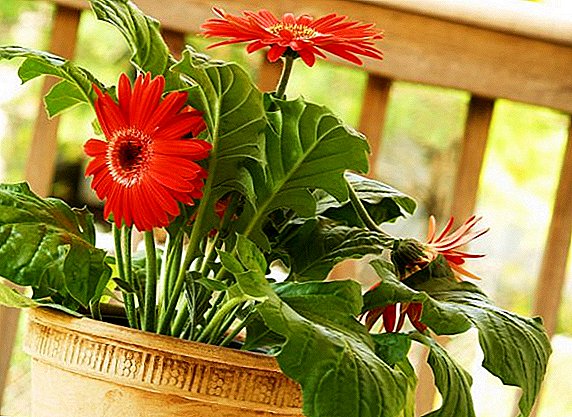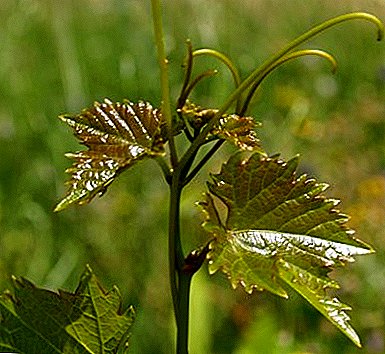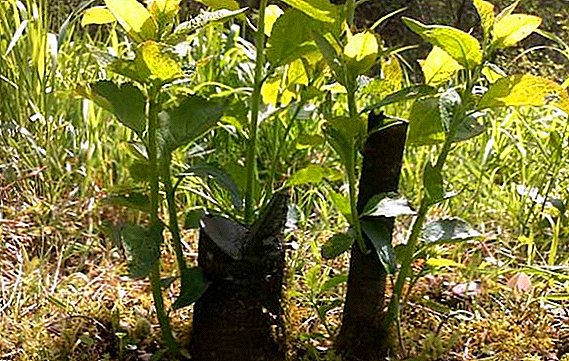 Hatiora belongs to the family of cacti. First found in the tropics of Brazil, therefore, is considered an exotic plant. Its name was given in honor of the cartographer and mathematician Thomas Hariot. The hatiora has segmented stalks and is an epiphytic and lithophytic cactus. In nature, it grows to two meters. Usually grows in crevices of rocks or in trees. Stems grow vertically upwards, and with age they wilt. The trunk becomes stronger with time, because of this hatiora at the age of 3-4 years it becomes more like a tree.
Hatiora belongs to the family of cacti. First found in the tropics of Brazil, therefore, is considered an exotic plant. Its name was given in honor of the cartographer and mathematician Thomas Hariot. The hatiora has segmented stalks and is an epiphytic and lithophytic cactus. In nature, it grows to two meters. Usually grows in crevices of rocks or in trees. Stems grow vertically upwards, and with age they wilt. The trunk becomes stronger with time, because of this hatiora at the age of 3-4 years it becomes more like a tree.
Optimal conditions in the house
Thermophilous plant. Loves moisture, but not its stagnation. Poor temperature drops, drafts and direct sunlight. The flower comes from the tropics and requires conditions close to its natural habitat.
Lighting
Loves soft and diffused lighting, so choosing a place for a flower should be taken into account. On the windows on the south side, shading is obligatory in the summer, direct sunlight is bad for the flower. On the windowsills, located on the north side, is to take care of sufficient lighting. It is best to put a flower in the east or west side.

Temperature
It is not picky about the temperature mode, the room is right for it. The temperature of 18-20 ° C should be maintained throughout the entire period, except for the rest period. With dry air, constantly spray warm water.
Important! During the rest period, and this is the beginning and the middle of autumn, it is necessary to lower the temperature regime to + 15 ° C. Otherwise, the plant does not have time to gain strength before flowering.
Care for a hatiora at home
Caring for a hatior at home does not require much effort, the main thing is to pay attention to the appearance of the flower. Timely watering and dressing - the main concern. True, the stems are very fragile, it is worth paying attention to the adult flower.
From their own weight they can break and need support. In this case, they should be tied up. Poor drafts and sudden changes in temperature, because of this, buds and cuttings may fall off. In summer, the flower is desirable to make a balcony.
Watering
Hatiora is moisture-loving and requires frequent watering. When planting plants, it is worth paying attention to good drainage, so that there is no stagnant moisture. The roots of this cactus are fragile and with excessive moisture content in the substrate quickly rot.
Root irrigation is best done as the top layer of the substrate is dried with a small amount of liquid. During the period of heat water in the morning or evening. Water should be separated and warm as tropical rain. During the rest period, watering is significantly reduced.
The group of succulent plants also includes: Kalanchoe, Nolina, Aihrizone, Agave, Cacti, Lithops, Adenium, Aloe, Young, Zamiokulkas, Fatty.
Air humidity
Dry air tolerates well. This is typical of its habitat. In the heat needs additional foliar irrigation. It is advisable to put a pallet under the pot with wet expanded clay.
Substrate and feed
There are no special requirements for the choice of soil for the hatiora. Can be planted in the purchase substrate, and in the soil from the garden or vegetable garden. There are store substrates specifically for growing cacti. They have already made all the necessary fertilizers for plants.

At first, after planting, the plant will not need additional feedings. In the soil, taken from the territory of its own plot, the earth is naturally filled with the necessary microelements.
Choose a fertile layer (top loose soil layer). Stir it with sand and peat. This mixture will be even more nutritious. When planting a flower in a pot, take care of drainage.
There are many options for this: broken bricks, expanded clay, crushed stone, or even foam. He must occupy the third part of the pot.
It is necessary to feed a flower during growth. Feeding interval 1-2 times per month. Suitable for any fertilizer family cacti. The composition of the feeding should not include calcium. It is better to use special fertilizers for cacti.
Important! Be sure to monitor the nitrogen concentration in the fertilizer. In large quantities, it adversely affects the plant, contributes to root rot.

Features care during rest
In the rest period, the hatior does not require special care. The temperature of the room in which the flower is located at this stage should not exceed 15 ° C.
Under these conditions, the plant does not come out of hibernation and gain strength. If the hatiora flows during the rest period and you don’t know what to do, water it with a small amount of warm water. Remember that watering during this period should not be frequent.
When leaving hibernation, the plant needs feeding. Old shriveled shoots should be cut. So you rejuvenate the beauty.
To create a cozy atmosphere in the office, you can plant monstera, violets, spathiphyllum, chlorophytum, dieffenbachia, ficus.
With properly organized conditions for the rest period, the plant will begin to form buds. Let's see when the hatiora blooms. In our country, it happens in winter or spring, and at home, the plant blooms in summer.
Transplantation and reproduction
Propagation hatiora occurs cuttings. Unscrew 2-3 segments, then they are dried and planted in wet soil or sand. It also happens that the cuttings that have fallen from the mother plant grow independently into the soil.
Over time, the question arises how to transplant hatiora. It is necessary to replant at the end of flowering, in the spring. In our area it blooms in winter. A young plant is transplanted every year, and an adult once every 3-4 years. The pot should be low.
Fight against diseases and pests
With bacterial diseases on the segment of the plant appears slippery and wet area. It should be removed immediately, otherwise the disease will progress and grow. With the defeat of the main stem, it is necessary to produce grafting. From healthy cuttings will grow a new plant. Antibacterial drugs in this case are powerless.
Of fungal diseases are frequent fusarium and late blight. Infection of hatiora with fusarium occurs through the damaged segment, when pathogenic organisms enter its tissue. For the treatment using fungicides. The proportions are indicated in the instructions for the preparation.

Late blight affects the root. Usually gets infected ground and infects the entire root system. Lose blight can be determined by the appearance of the plant, the hatiora wither quickly and the sigments change color to pale gray. The treatment is made preparations for fungal diseases.
It is also difficult to be safe from pests. Often it is: spider mite, whitefly, mealy worm, scythe. It is necessary to treat insecticides from a certain type of parasites.
Varieties of hatiora
Hatiora has its special features that are not confused with any other plant. Because of its unusual shape, it carries many names: "male tears", "dream of a drunkard", "cactus of dancing bones".
Did you know? There is a superstition that a hatiora can "survive" a man from home. Professional growers perceive such information with ridicule.
For growing in ambient conditions emit such species:
- Hatiora Gartner has dark green drooping shoots. The segments are oval in shape and along the edges with scalloped notches with areoles on top. In places of articulations and on the tops of the stems, bright red buds appear during flowering.
- Hatiora Germina shoots arcuate or straight. The areola has 1-2 hairs. Flowering appears at the top of the areola. Buds crimson color.
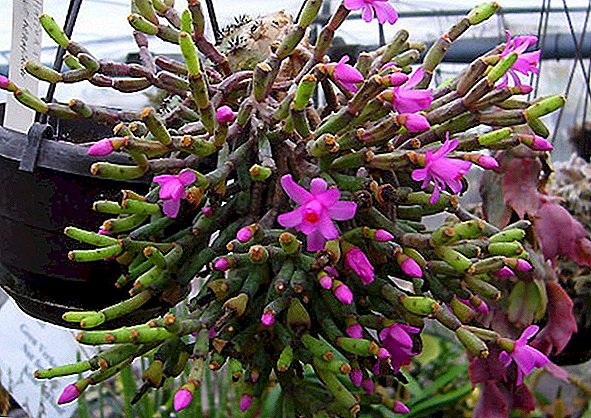
- Hatiora pink. Her shoots do not have a certain color. Depending on the light, shoots can be dark green, reddish or even bluish. Segments are small, have 3-4 faces. There are flat with scalloped edges. 1-3 funnel-shaped flowers appear on the top of the areola. The color of the bud is determined by the name of the species.
- Hatiora salicornous or saltrosovaya has fine segmented stems. Grows whorled, drooping stems or straight. The segments are club-shaped or bottle-shaped. Because of this, the commoner is called "the dream of a drinker." Flowers are small, look like bells. They are located on the tops of the areoles and have an orange, yellowish or salmon color. This species is very popular and has many names. And for its originality this hatiora is also called "cactus of dancing bones."



Did you know? Previously, Ripsalidopsis was considered a separate plant genus, but modern botanists transferred all its species to the Hatiora genus.
Ripsalidopsis is also called the "Easter cactus" because it blooms in spring. It is often confused with Schlumberger (zigokaktus, Decembrist), they are very similar in appearance, but belong to different genera of plants and bloom at different times.
Ripsalidopsis can be distinguished from the zygocactus by the stem plate: in the first, it is smooth, and in the second, with sharp teeth at the edges. Flowers Ripsalidopsisa symmetrical, and the Decembrist beveled.
Hatiora has not so many species, but they are all unusual and deserve attention. When choosing a new indoor plant, we try to collect all the information about it.

It is important to know the hatiora is poisonous or not. For many years, the cultivation of this flower at home about a similar problem was not discussed. Hatiora is not a toxic plant.



